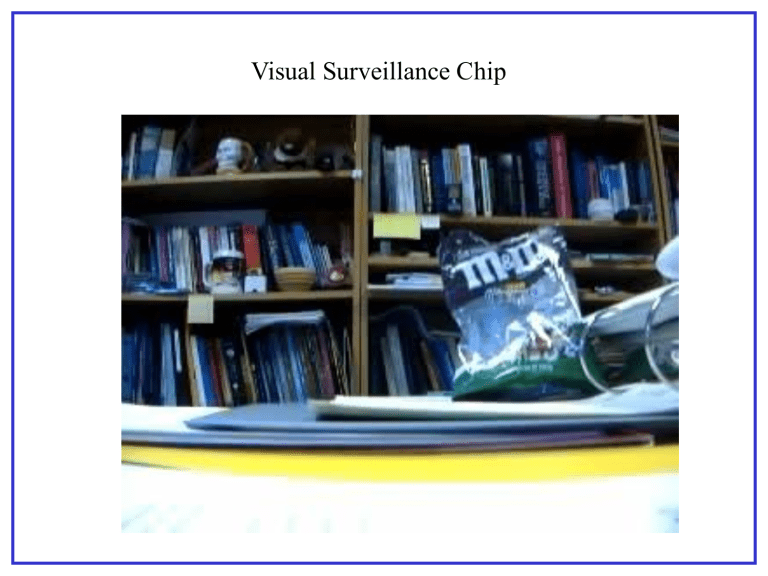Visual Surveillance Chip

Visual Surveillance Chip
Visual Surveillance Chip
1. Visual Change Detection
2. Photoreceptors and change detection
3. superior colliculus / optic tectum
Yarbus
Our eyes generally move to gather information that we seek, but very often our eyes move to look at sudden changes in the environment.
Our retina is not simply a layer of photoreceptors of a single type, rather receptors vary
In their sensitivity to different: spatial scales, spatial frequencies, intensities, colors, and temporal frequencies.
Although much of our detailed visual processing occurs using the high resolution system of the fovea, our peripheral vision is driven by a coarse spatial system with high sensitivity to temporal change.
The superior colliculus (SC) is a subcortical region of the brain involved in producing rapid sensory orientation movements. The SC receives direct projections from the retina and subserves reflexive eye movements to sudden changes in the visual environment.
visual cortex retina
LGN
SC eye muscle control areas
From "Merging of the Senses",
Stein and Meredith, 1994
Chip Idea:
1. Using the adaptive photoreceptor design (provided), design a low-power surveillance chip that will signal the location of visual change.
2. Design an adaptive threshold for each pixel to reject locations that have frequent movement that is not of interest.





